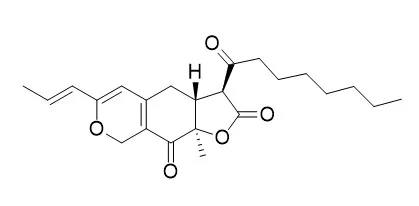| Ankaflavin (AK) is an active compound having anti-inflammatory, anti-cancer, antiatherosclerotic, and hypolipidemic effects. We have previously reported that AK acts as an antioxidant and antidiabetic drug; however, the mechanism by which AK prevents diabetes remains unknown. Hyperglycemia is associated with protein glycation, which produces advanced glycation end-products (AGEs). Methylglyoxal (MG)-a metabolite of carbohydrates-is believed to cause insulin resistance by inducing inflammation and pancreas damage. In this work, diabetes was induced in Wistar rats (4 weeks of age) by treating them with MG (600 mg/kg bw) for 4 weeks. We observed that AK (10mg/kg bw) exerted peroxisome proliferator-activated receptor-γ (PPARγ) agonist activity, thereby enhancing insulin sensitivity (as indicated by hepatic GLUT2 translocation, PTP1B suppression, and glucose uptake) by downregulating blood glucose and upregulating pancreatic and duodenal homeobox-1 and Maf-A expression and increasing insulin production in MG-induced rats. However, these effects were abolished by the administration of GW9662 (PPARγ antagonist), but the expression of hepatic heme oxygenase-1 (HO-1) and glutamate-cysteine ligase (GCL) was not suppressed in MG-induced rats. Therefore, the nuclear factor erythroid-related factor-2 (Nrf2) activation was investigated. AK did not affect hepatic Nrf2 mRNA or protein expression but significantly increased Nrf2 phosphorylation (serine 40), which was accompanied by increased transcriptional activation of hepatic HO-1 and GCL. These data indicated that AK protected rats from oxidative stress resulting from MG-induced insulin resistance. In contrast, these effects were not detected when the rats were treated with the antidiabetic drug rosiglitazone (10mg/kg bw). Moreover, we found that AK did not inhibit the generation of AGEs in vitro; however, the glutathione (GSH) levels in liver and pancreas of MG-induced rats were elevated in rats administered AK. Therefore, we believe that GSH may lower the MG level, which attenuates the formation of AGEs in the serum, kidney, liver, and pancreas of MG-induced rats. We also found that AK treatment reduced the production of inflammatory factors, such as tumor necrosis factor-α and interleukin-1β. Taken together, the results of our mechanistic study of MG-induced rats suggest that the protective effects of AK against diabetes are mediated by the upregulation of the signaling pathway of Nrf2, which enhances antioxidant activity and serves as a PPARγ agonist to enhance insulin sensitivity. |






 Cell. 2018 Jan 11;172(1-2):249-261.e12. doi: 10.1016/j.cell.2017.12.019.IF=36.216(2019)
Cell. 2018 Jan 11;172(1-2):249-261.e12. doi: 10.1016/j.cell.2017.12.019.IF=36.216(2019) Cell Metab. 2020 Mar 3;31(3):534-548.e5. doi: 10.1016/j.cmet.2020.01.002.IF=22.415(2019)
Cell Metab. 2020 Mar 3;31(3):534-548.e5. doi: 10.1016/j.cmet.2020.01.002.IF=22.415(2019) Mol Cell. 2017 Nov 16;68(4):673-685.e6. doi: 10.1016/j.molcel.2017.10.022.IF=14.548(2019)
Mol Cell. 2017 Nov 16;68(4):673-685.e6. doi: 10.1016/j.molcel.2017.10.022.IF=14.548(2019)